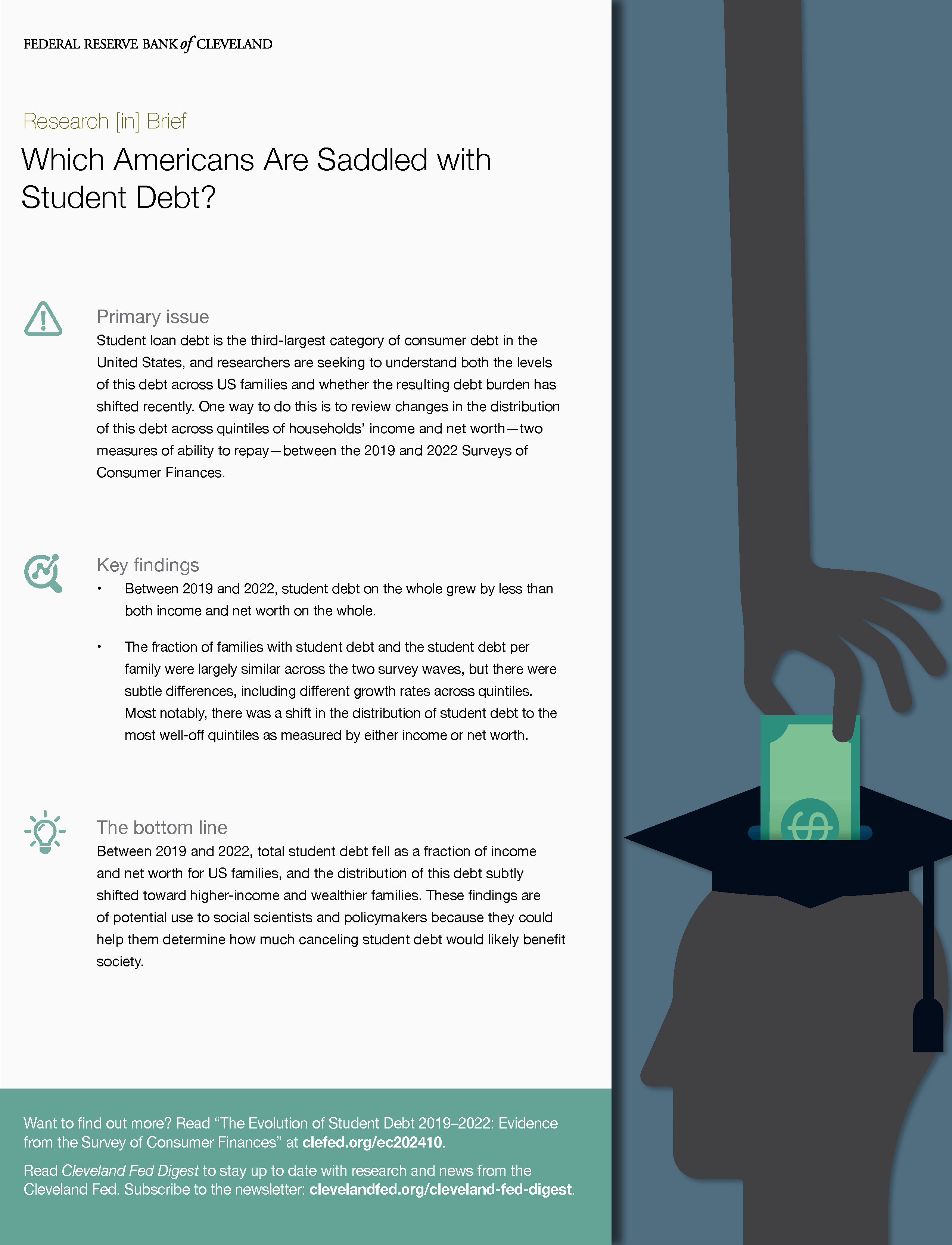- Share
Research [in] Brief: American Families and Student Debt
Researchers are studying the changes in distribution of student loan debt and two measures of ability to repay between the 2019 and 2022 Surveys of Consumer Finances.
Infographic

Full text
Primary issue
Student loan debt is the third-largest category of consumer debt in the United States, and researchers are seeking to understand both the levels of this debt across US families and whether the resulting debt burden has shifted recently. One way to do this is to review changes in the distribution of this debt across quintiles of households’ income and net worth—two measures of ability to repay—between the 2019 and 2022 Surveys of Consumer Finances.
Key findings
- Between 2019 and 2022, student debt on the whole grew by less than both income and net worth on the whole.
- The fraction of families with student debt and the student debt per family were largely similar across the two survey waves, but there were subtle differences, including different growth rates across quintiles. Most notably, there was a shift in the distribution of student debt to the most well-off quintiles as measured by either income or net worth.
Bottom line
Between 2019 and 2022, total student debt fell as a fraction of income and net worth for US families, and the distribution of this debt subtly shifted toward higher-income and wealthier families. These findings are of potential use to social scientists and policymakers because they could help them determine how much canceling student debt would likely benefit society.
Want to find out more? Read “The Evolution of Student Debt 2019–2022: Evidence from the Survey of Consumer Finances” at clefed.org/ec202410.
Read Cleveland Fed Digest to stay up to date with research and news from the Cleveland Fed. Subscribe to the newsletter: clevelandfed.org/cleveland-fed-digest.

